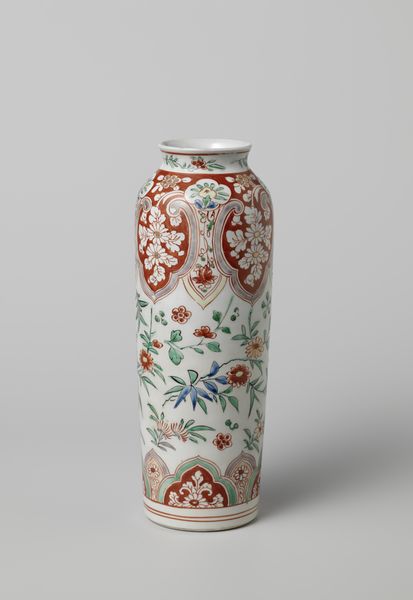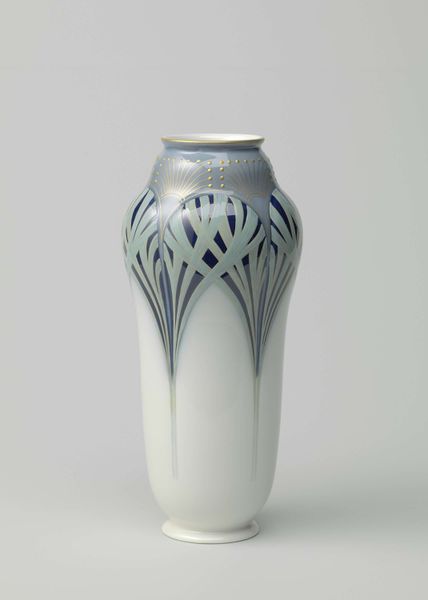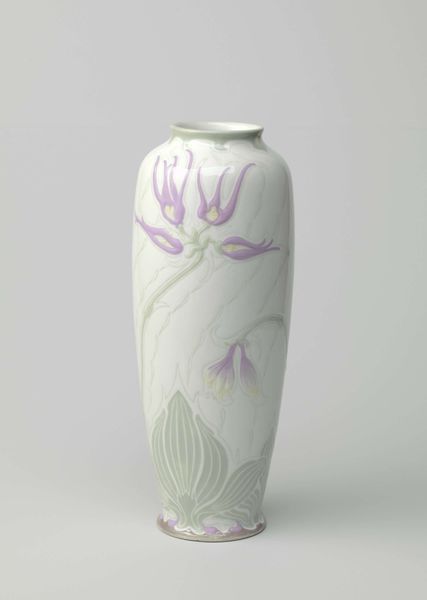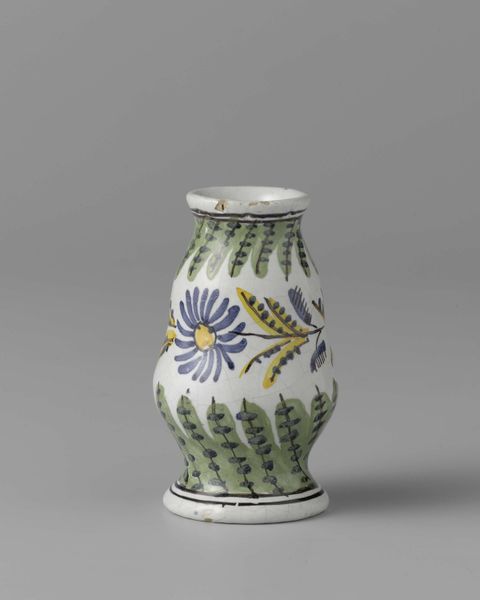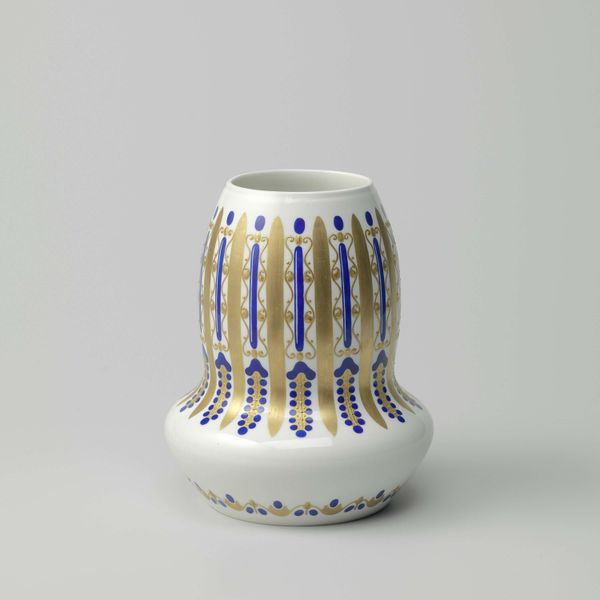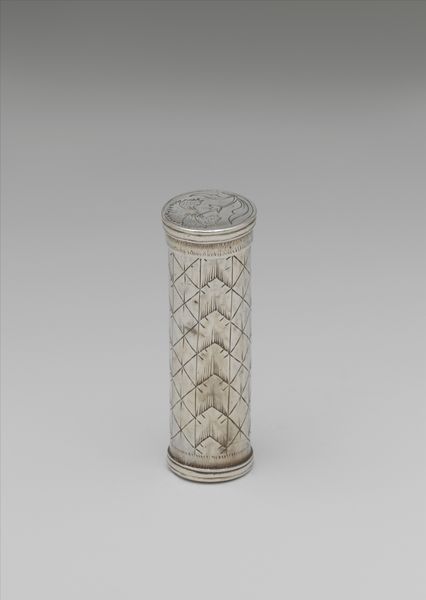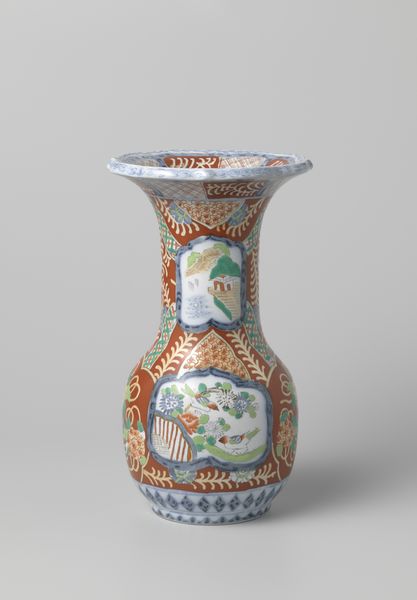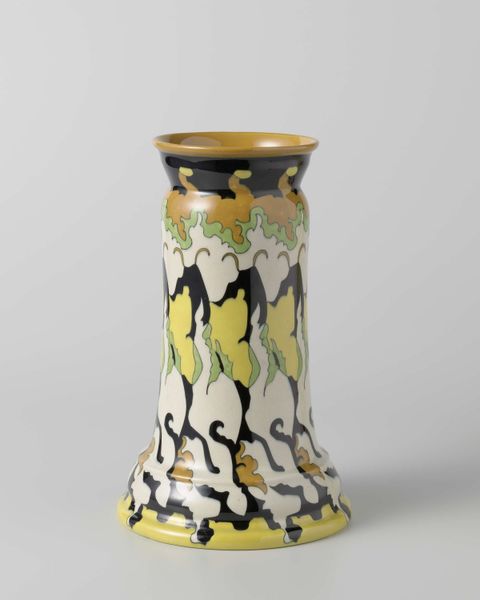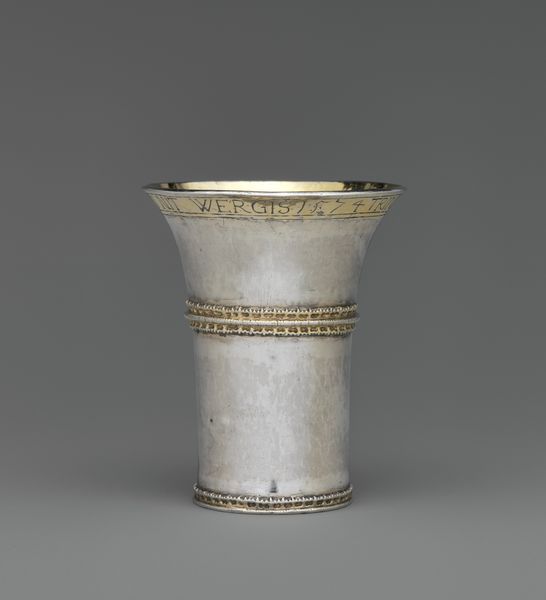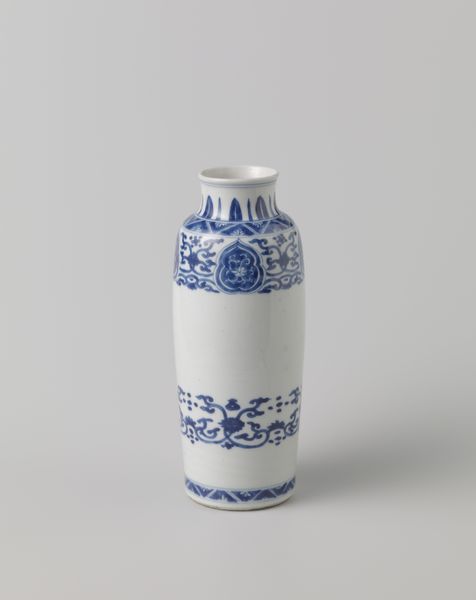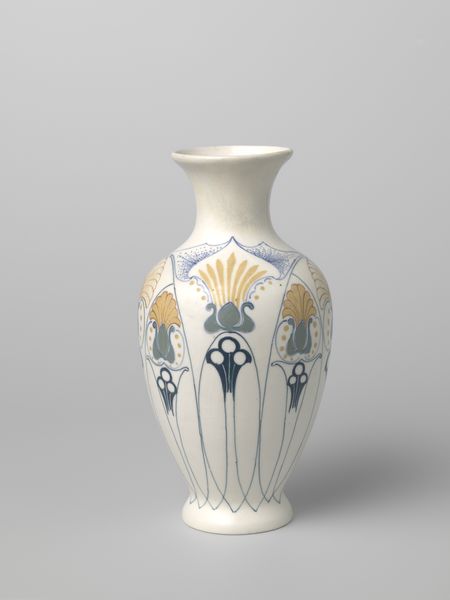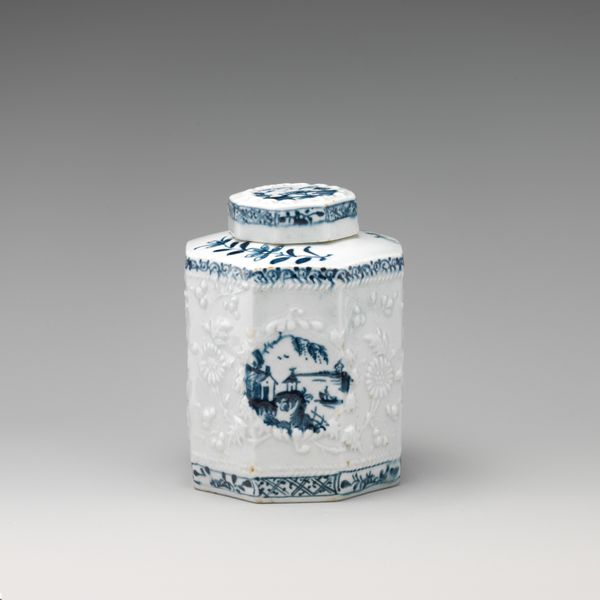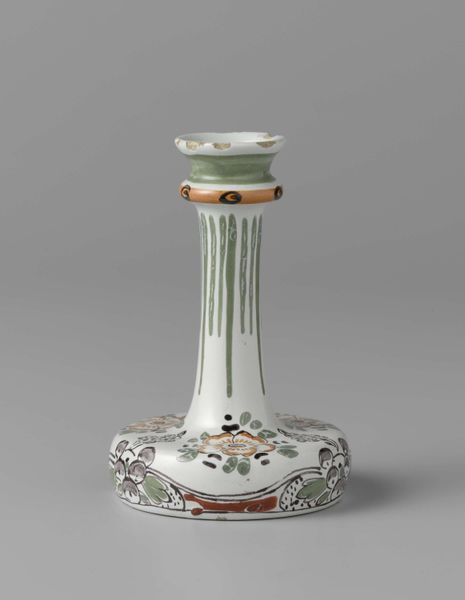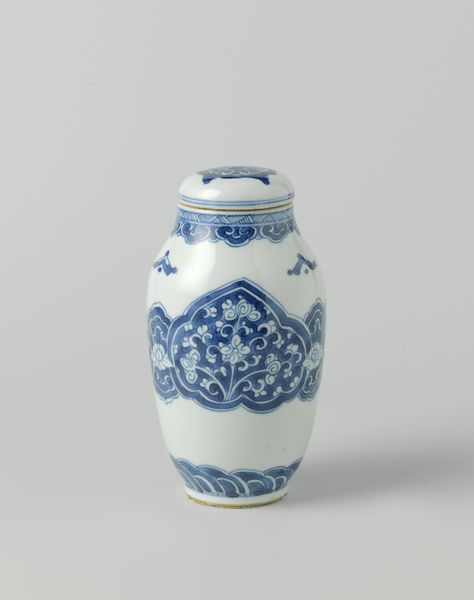
ceramic, earthenware
#
ceramic
#
earthenware
#
decorative-art
Dimensions: height 9.8 cm, diameter 3.5 cm
Copyright: Rijks Museum: Open Domain
Curator: Isn’t it lovely? The shape reminds me of those old medicine bottles you’d see in apothecaries. Editor: And talk about pared-down beauty! I'm immediately struck by its muted palette and how grounding that makes me feel. Soothing, in a way. Curator: It really is. We’re looking at a piece known as “Vase with Leaf Decoration," made sometime between 1880 and 1920, by De Porceleijne Fles, a Dutch pottery works. It's earthenware, and sits here at the Rijksmuseum. Editor: "De Porceleijne Fles", which is kind of like “The Porcelain Bottle,” which connects us back to those medicinal containers! Considering its production period, and that name, how does its decorative art fit into wider discussions about design history at that time? It feels rather humble, somehow, considering what else was happening artistically at the time. Curator: Exactly! Amidst the rise of industrial design and mass production, you have artisans deliberately embracing the handmade, seeking purity and naturalism. See how the wobbly yellow swirls almost frame that sprig of a plant right up the middle. Imperfect, yes, but lovingly so. Editor: Yes. Looking closer, there is this intentionality, like someone meticulously deciding the precise curve and weight of each little tendril. It resists the coldness often linked to industry and instead asserts its presence as both utilitarian object and lovingly hand-crafted piece. Curator: And doesn't it beg the question of sustainability? Unlike many mass-produced objects of that era, the very essence of this ceramic vase implies that it was intended to endure. There is an ethical stance here that is both implicit and moving. Editor: Absolutely, that’s very interesting, because objects can offer a lens into what societies value. A relatively humble vase might whisper complex truths, acting almost like a time capsule about environmental mindfulness. So, ultimately, the beauty resides in its functionality and its conscious existence within its historical period. Curator: Precisely, a reminder to find beauty in simple acts, in enduring things. Editor: Well, this vase has opened my eyes to finding resonance even in quiet objects.
Comments
No comments
Be the first to comment and join the conversation on the ultimate creative platform.
